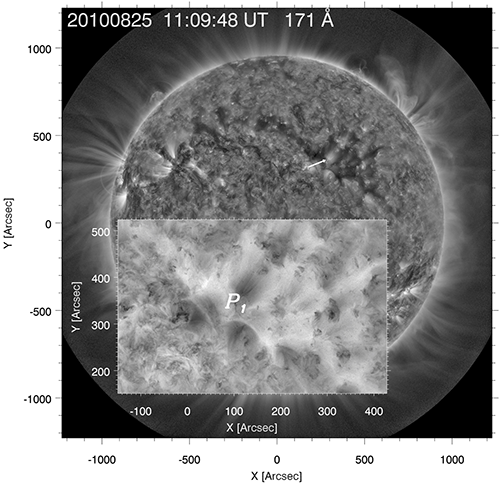
The arrow identifies a plume (P1), shown in detail in the insert, at the edge of a coronal hole in an EUV image from SDO/AIA (Credit: N.-E. Raouafi)
Lower Atmosphere
- Photospheric magnetic fields at sub-arcsecond scales.
- Sources of solar irradiance using bolometry.
- Filament structure at sub-arcsecond scales.
- The origin of plumes, jets, and other small-scale activity.

A composite image of the corona in two EUV wavelengths representing the cold (red, 304 Å) and hot (green, 284 Å) components. Intermediate temperatures shown in gold. The images have been enhanced by a wavelet processing algorithm. (credit: G. Stenborg, A. Vourlidas & NRL/NASA).
Coronal Heating – Eruptive Activity
Understand the physical processes behind the heating of the corona and the explosive release of magnetic energy.
Projects:
- Fine-scale structure of the EUV corona
- Formation of Magnetic Flux Ropes
- Filament structure
- Models of magnetic sensitive coronal lines and inversion techniques for coronal magnetography.
- Radio imaging (GHz -> MHz)
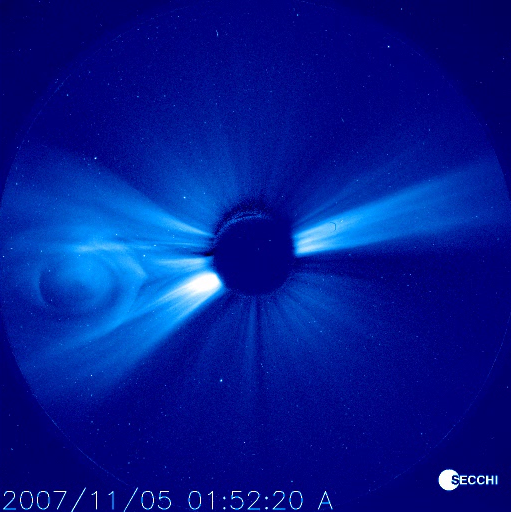
An outstanding example of a magnetic flux rope CME captured by the SECCHI/COR2 coronagraph on the STEREO-A spacecraft (Credit: A. Vourlidas & NRL/NASA)
Coronal Mass Ejection (CME) Physics
Uncover the physical properties, formation and evolution of CMEs
Projects:
- Physical properties of CMEs with specialization on mass and energetics.
- Multi-viewpoint CME analysis with emphasis on 3D reconstruction, morphology, and kinematics.
- Statistical analyses of CMEs and event catalogs.
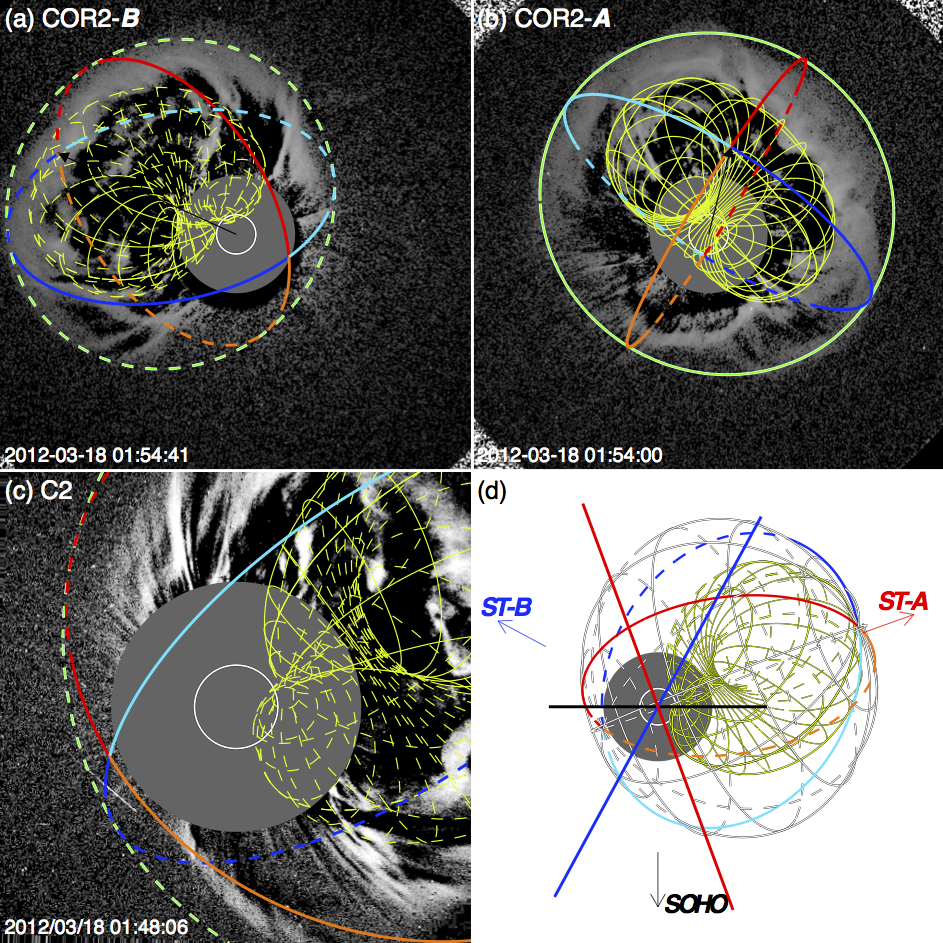
3D reconstruction of a coronal shock (red, blue, green lines) and the driving CME (yellow grid). The images show the projections in near-simultaneous images from 3 coronagraphs (COR2-B, COR2-A, C2) and the their relative position to the expanding shock (bottom right). Credit: R.-Y. Kwon & NRL/NASA)
Coronal Shock Physics
Uncover the physical properties, formation and evolution of shocks
Projects:
- Analysis and modeling of coronal waves ('EUV waves').
- Identification, reconstruction and analysis of CME-driven shocks.
- Radio, EUV and White Light analysis of eruptive activity.
- 3D shock properties and connection to SEPs.
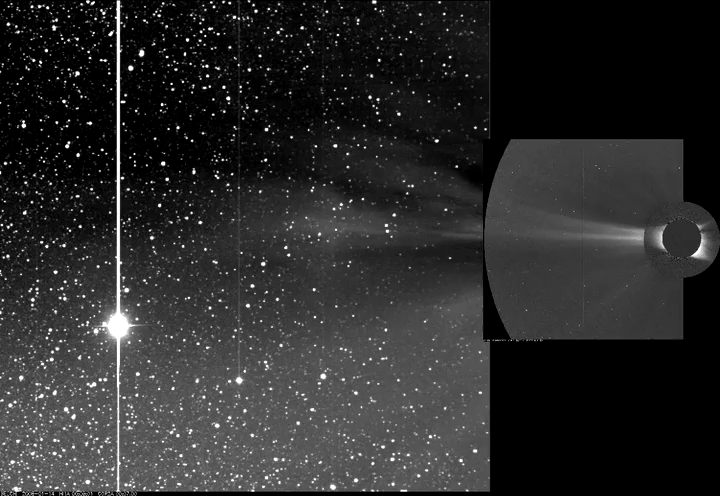
A composite of the SECCHI imagers on STEREO-A captures the formation of the solar wind close to the Sun. The bright circular feature in the lower left is Venus. (Credit: A. Vourlidas & NRL/NASA)
Solar Wind Formation & Evolution
Understand how solar wind forms and evolves in the inner heliosphere
Projects:
- Fine-scale structure of the slow solar wind.
- CME-solar wind interactions.
- 3D reconstructions of the extended corona.
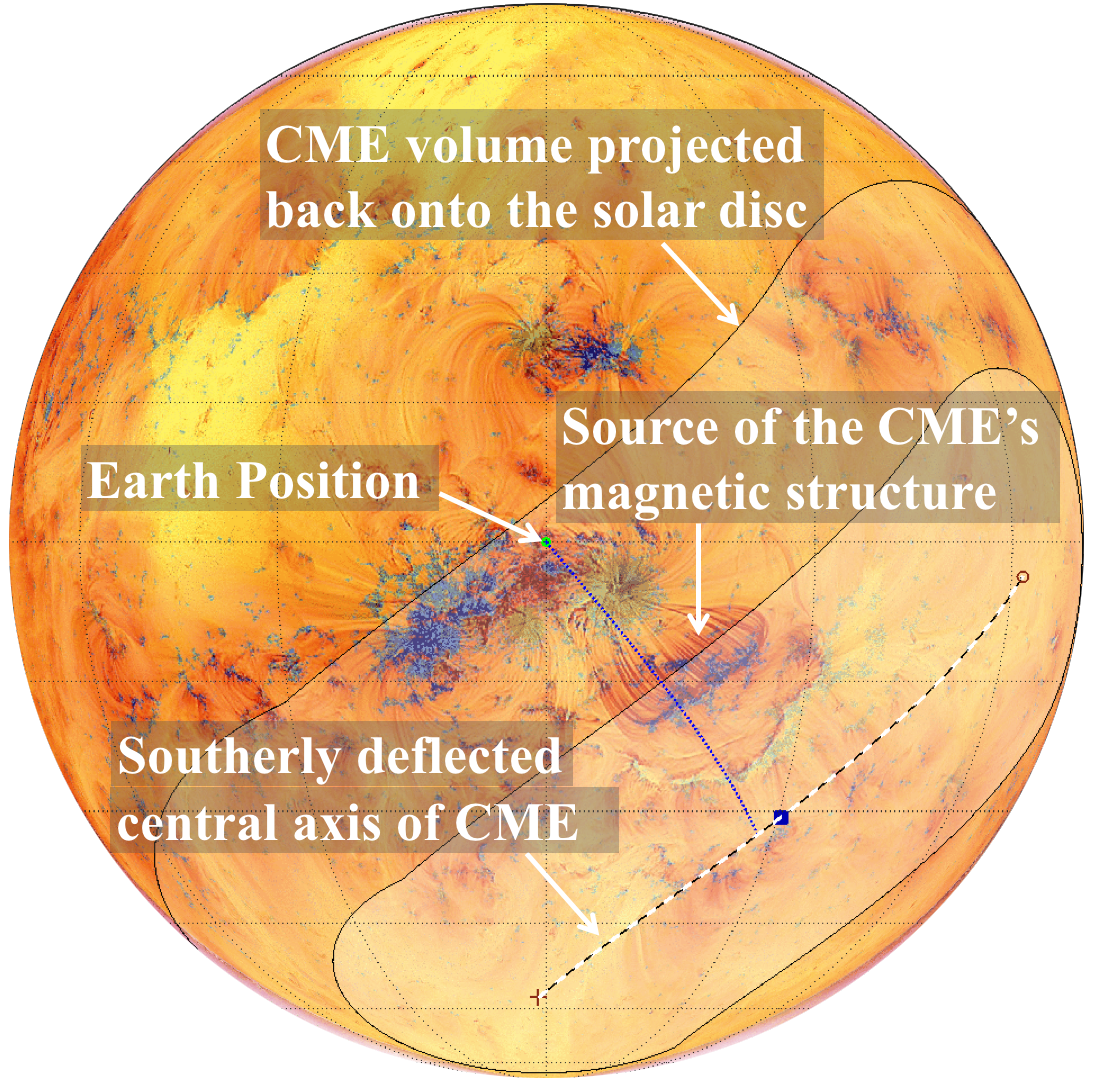
Evaluating the potential of terrestrial impact of a CME using solar observations (from Savani et al. 2015. Credit: N. Savani & Wiley/AGU).
The Drivers of Space Weather
Understand the geo-effectiveness of CMEs and Corotating Interaction Regions (CIRs)
Projects:
- CME evolution in interplanetary space (kinematics, distortion, rotation, etc).
- Magnetic field structure at 1 AU.
- • Formation/evolution of Corotating Interaction Regions (CIRs).
- 'sun-to-mud' studies of Earth-directed CMEs.